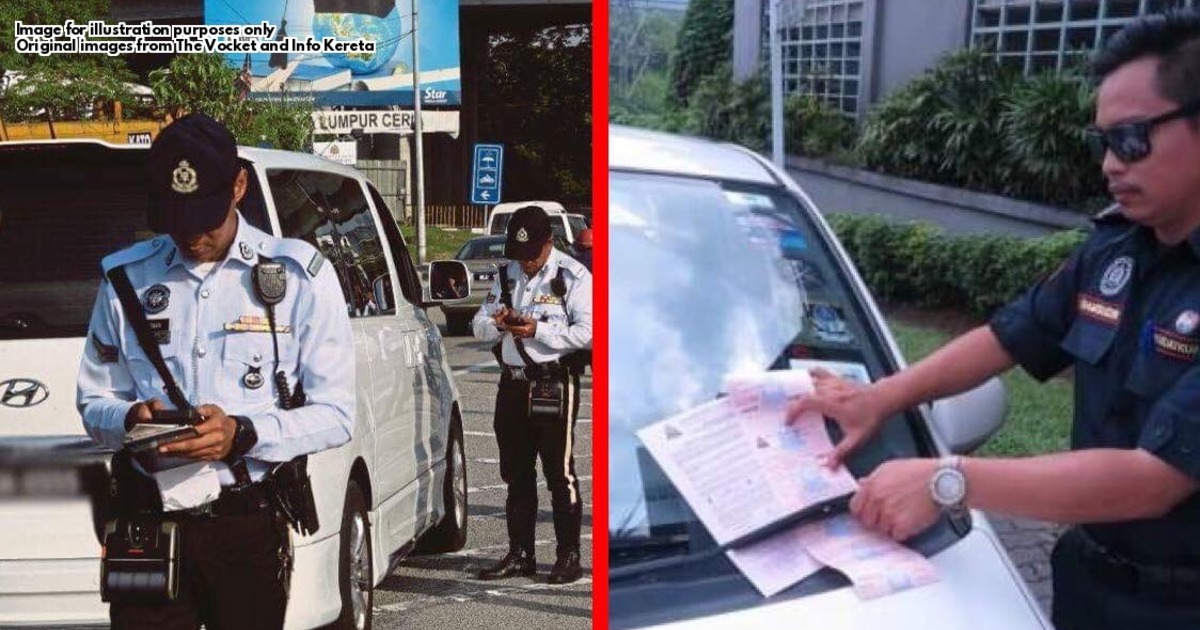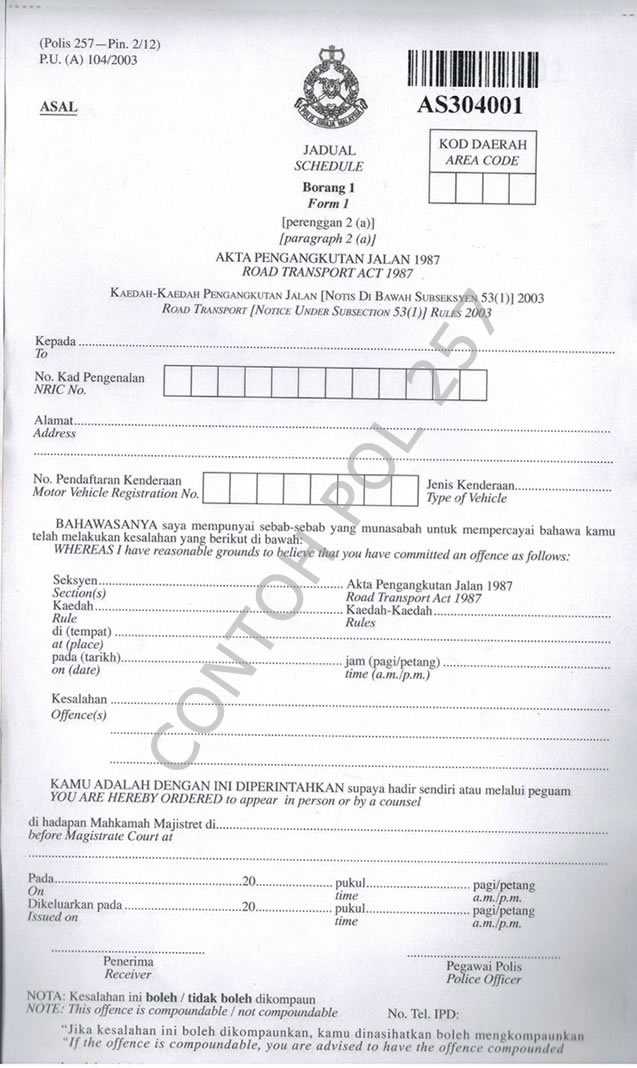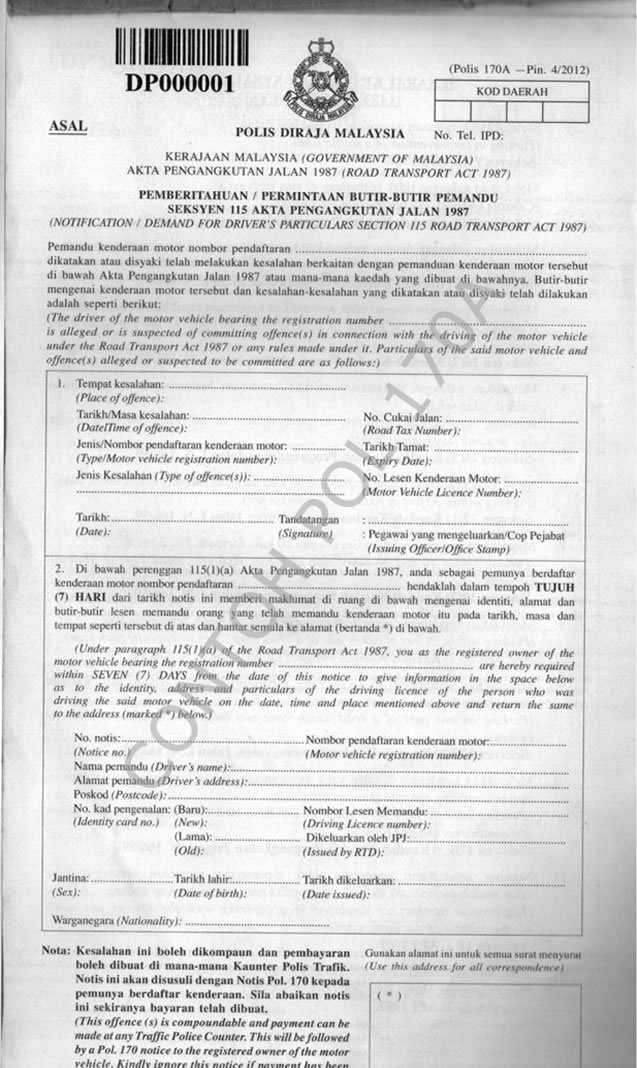

5 different types of saman that you can get for being a bad driver
almost 6 years ago Evin ChanMost of us are aware that road traffic laws are normally regulated by local authorities such as Polis DiRaja Malaysia (PDRM) and Jabatan Pengangkutan Jalan (JPJ). The system is there to enforce traffic rules and to reduce traffic accidents. So if you drive on a regular basis, there’s probably a chance that you’ve been pulled over by the cops because you decided to take a risk and shave a few minutes off your driving time by beating a red light, or gotten stopped at a roadblock because you completely forgot to renew your road tax.
But whichever the case, this would always result in a fine which you’ll have to pay. If this isn’t bad enough, you can also be at risk of losing your license once and for all.

However, ever wondered how the authorities determine how you get punished?
Well, the short answer is that, rather than to have a separate punishment for each type of offence, they’ve group most of the traffic offences you could possibly commit into five categories – each with its own type of punishment
There are actually two different types of summons that are normally issued by the PDRM, namely POL. 257 and POL. 170A.
POL. 257 is used when you’re caught red-handed

POL. 257 are summons that are issued in instances where you’re caught doing the offence on the spot such as going against a “NO ENTRY” sign, using the mobile phone when driving, or stopping at a busy highway without a valid reason.
The list can go on and on, so to make life easier, these offences have been categorised into four major categories that range from offences that are life threatening to the ones that are less severe (does not directly contribute to harm or public safety).
The offences listed under this category are known as non-compoundable offences. This means that they are the primary cause of accidents which jeopardises the safety of other road users, or create traffic jams. Some offences under this category are :
- Using the emergency lane without a legitimate reason
- Using mobile phone while driving
- Overtaking vehicles from the left
- Overloading passengers in a vehicle
Imagine this situation, you are driving back from a club after having a drink or two, and you’re so unlucky to get pulled over by the police and positively tested for driving under the influence, you will be found guilty of drunk driving and actually be fined a total amount of RM300.
[READ MORE : What are Malaysia's laws on drinking and driving?]
While drunk driving is listed in the above as RM300 in summons, however under Section 45(1) of the Road Transport Act 1987, the fine could go up to RM1000 and also carry a jail term of not more than three months for first conviction. In the case of a second or subsequent conviction, the offender would have to pay a fine between RM2000 to RM6000 and liable to imprisonment for up to 12 months.
So, if you really need a ride home after a long night of partying, you can always opt for carpooling or call for a Grab. This option is definitely safer than taking the risk... just saying.
These are offences which can possibly contribute to accidents and jams, but not as directly as in first category offences. Some examples of these include :
- Running a red light
- Stopping inside a yellow box junction
- Cutting traffic queue
- Making illegal U-turn
The punishment for those who break the laws in the second category will have to pay a fine of RM 150 if paid within the first 15 days, RM200 between 16 to 30 days, and RM300 if paid between 31-60 days.
There can sometimes be an overlap between first and second category offences, and this will usually be up to the officer to decide depending on the actual circumstances that got you caught in the first place.
As for this category, you might want to take a good look at the maintenance of your car as this area is all about the physical condition of your car. This can involve the roadworthiness of your car – proper working brakes, side mirrors, and working headlights – to driver-related mistakes such as having working headlights but forgetting to turn them on.
In this category, the penalty for the offence is RM100 if you (manage to) pay within 15 days, escalates to RM150 if paid between 16 to 30 days, and a maximum of RM250 if paid between 31-60 days.
These are, generally speaking, the ‘least severe’ offences because they don’t directly contribute to accidents, but are against the law all the same. Some examples of these are not displaying ‘P’ stickers and driving without a valid license. However, if you are fine with a fine, you have to pay a penalty of RM70 if paid within 15 days, RM120 between 16 to 30 days, and RM150 between 31-60 days.
So while not putting a P sticker doesn’t make you any better or worse a driver, you can still be fined RM70 because you’re required by law to display it as a probationary driver.
POL. 170A is alllll about parking

POL. 170A is basically summons that are issued via post or placed on the vehicle when the driver is not present. This includes Automated Awareness Safety System (Awas), vehicle double parking, and parking without paying or displaying coupon ticket.
You might have “good excuses” to break the law like you are only running the red light at 3AM in the morning because there is no other cars on the road, or you double parked outside of the boba shop to feed your bubble tea addiction. However, all these honest mistakes of yours might cost you a fortune, which is a maximum of RM300 in fine.
What happens if you don’t pay the fine?

Now that you know how traffic offences somewhat works and the amount of fines you can be liable for, it may not matter in the end because you’ll be thinking…..
“Saman need to pay one ah? Pay later got discount right?”
However, this might not always be true as fines do increase over time. And if you think no legal action will be taken against you, you’re so wrong.
JPJ can always send you a letter to go to court for a hearing and, if you are trying to be cheeky and ignore them, you might be blacklisted until the case is resolved. This might result in an unpleasant experience the next time you go to the nearest JPJ office to renew your driving license or road tax. You have to make an appearance before the Magistrate to have your summons released from the blacklist. After that, you can then proceed to settle the outstanding amount and renew your license or road tax.
In the worst case scenario, if you avoid paying summons issued by PDRM, it could result in an arrest warrant being issued, and the warrant can only be cancelled by the court that issued it or if you get arrested.
Hence, to avoid being blacklisted, all motorists can settle their outstanding summons through the
- PDRM or JPJ payment counter (or whichever issued you the summons),
- Pos Malaysia branches all over the nation, or
- Online through MyEG’s website.
Or, you can avoid all these in the first place by being a law-abiding driver. Drive safe, guys!
not eevee, nor ev(i)an. it’s pronounce as eee-vin! :)